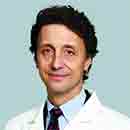By the Skin of Your Teeth
For a lot of people, the problem with vaccines isn't their therapeutic benefits -- they are one of medicine's greatest achievements -- but rather how vaccines are delivered: by injection.
In animal models, researchers at North Caroline State University are experimenting with a new vaccine delivery that uses dental floss to introduce vaccine medication via the tissue between teeth and gums.
Their tests showed that the new technique stimulates production of antibodies in mucosal surfaces, such as the lining of the nose and lung, as well as the bloodstream, which is what injected vaccines primarily do.
"This improves the body's ability to prevent infection because there is an additional line of antibody defense before a pathogen enters the body," said Harvinder Singh Gill, a professor of nanomedicine at NCSU.
Much work remains to be done, and the floss method won't work on everyone, i.e., infants and toddlers who don't yet have teeth. Or on people who say they floss when they don't.
Body of Knowledge
The average person defecates between three times a day to three times a week, based on factors like diet, hydration, activity level, age, medical conditions, stress and medications. There is no fixed "healthy" number.
Urination is similar, with the average person urinating between six and eight times per day, depending on factors like fluid intake, age and underlying medical conditions. Urinating more or less can be normal for some people, but changes in routine might signal a health issue to be discussed with a physician.
Get Me That, Stat!
Americans spend $2.8 trillion on health care annually, or more than $8,500 per person. Health care works out to one-sixth of the nation's total economy. If the health care system were to break off from the U.S. and become its own economy, it would be the fifth largest in the world, behind only the U.S., China, Japan and Germany.
Counts
4.1: Average number of annual doctor visits per person in the U.S.
5: In the United Kingdom
9.7: In Germany
6.8: In France
7.4: In Canada
6.7: In Australia
Source: Commonwealth Fund
Doc Talk
Prick test: A commonly used skin test to confirm hypersensitivity to a broad range of allergens, not an assessment of an unlikeable fellow
Phobia of the Week
Kathisophobia: Fear of sitting down
Never Say 'Diet'
The Major League Eating speed-eating record for grits is 21 pounds in 10 minutes, held by Patrick Bertoletti, whose feat proved his grit was true.
Best Medicine
The proper way to use a stress ball is to throw it at the next person to annoy you.
Hypochondriac's Guide
Acnestis is a term mostly used by zoologists to refer to the part of an animal's back that it cannot reach or scratch. It can be applied to humans too. It's typically the region between the shoulder blades on your back. There is no cure unless you grow longer arms.
Observation
"Eat clean. Stay fit. And have a burger to stay sane." -- American supermodel Gigi Hadid (b. 1995)
Medical History
This week in 1846, dentist William Morton used an experimental anesthetic -- ether -- for the first time on one of his patients at Massachusetts General Hospital to remove a tooth. Ether became one of the first widely used inhaled anesthetics for all manner of surgery but was eventually replaced by alternatives with fewer side effects (nausea, vomiting and prolonged recovery periods). Ether is also highly flammable, resulting in the occasional burning of patients when the vapor was ignited by sparking electrical equipment.
Ig Nobel Apprised
The Ig Nobel Prizes celebrate achievements that make people laugh, then think. A look at real science that's hard to take seriously and even harder to ignore.
In 1998, the Ig Nobel Prize in statistics went to Jerald Bain of Mt. Sinai Hospital in Toronto and Kerry Simnoski of the University of Alberta for their measured survey: "The Relationship Among Height, Penile Length and Foot Size."
Bain and Simnoski assessed 63 normally virilized men and found that, contrary to folk myths, height and foot size do not serve as practical estimators of penis length.
Of course, it's cold in Canada. ...
Sum Body
Six things to know about your pores.
1. The exact number of pores on the human body varies depending on factors like age, skin type and ethnicity. It's estimated the average adult has approximately 5 million, with varying distribution. Pores are primarily located on the face, scalp and torso. The face alone has roughly 20,000 pores.
2. There are two types: sweat and oil.
3. Men have larger pores than women.
4. Blackheads are pores that have become clogged. The "black" is not dirt but rather oxidized sebum (oil), which is usually white.
5. UV rays can make pores look larger by weakening the collagen that supports them and keeps them tight.
6. Hormonal fluctuations during pregnancy and menopause can cause pores to change size.
Last Words
"There are those in this old world of ours who hold that things break about even for all of us. I have observed, for example, that we all get the same amount of ice. The rich get it in the summertime and the poor get it in the winter." -- Legendary Old West lawman, professional gambler and journalist W.B. "Bat" Masterson (1853-1921) in his last column for the New York Morning Telegraph. Masterson died at his office desk from a massive heart attack after finishing the column.
========
To find out more about Scott LaFee and read features by other Creators Syndicate writers and cartoonists, visit the Creators Syndicate website at www.creators.com.
Copyright 2025 Creators Syndicate Inc.









Comments